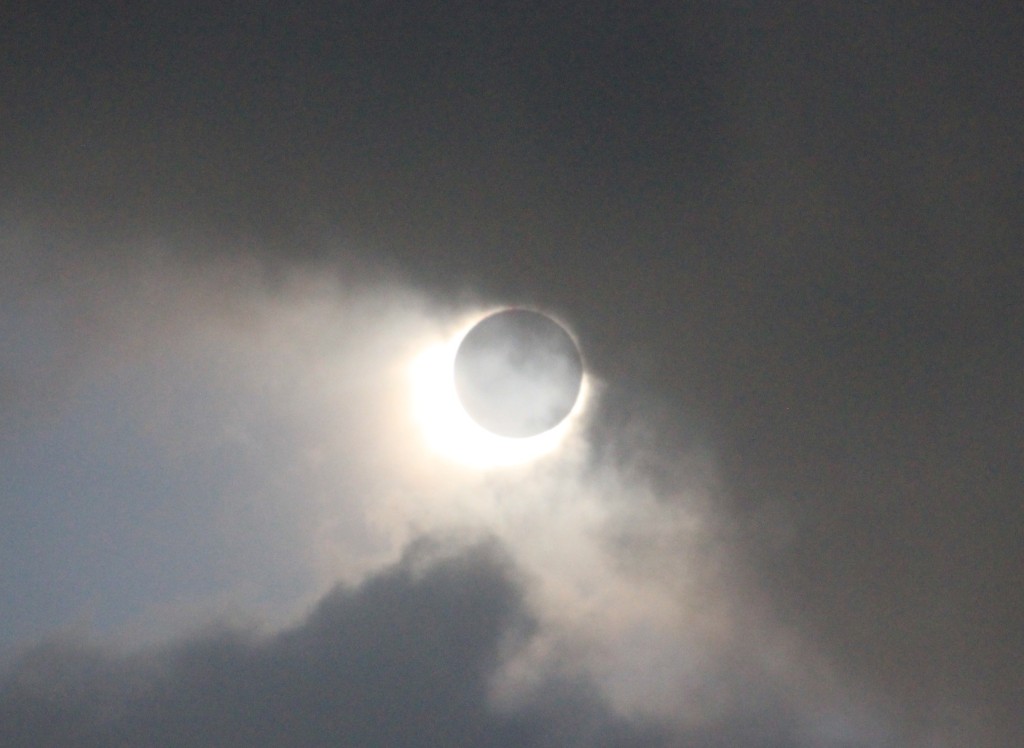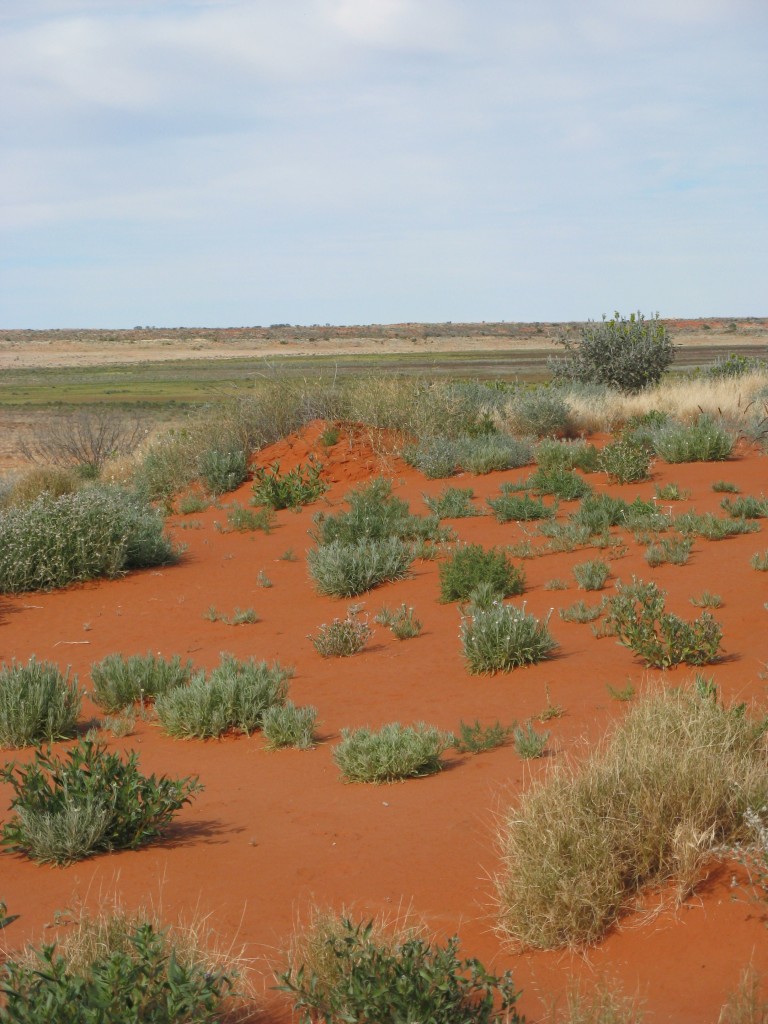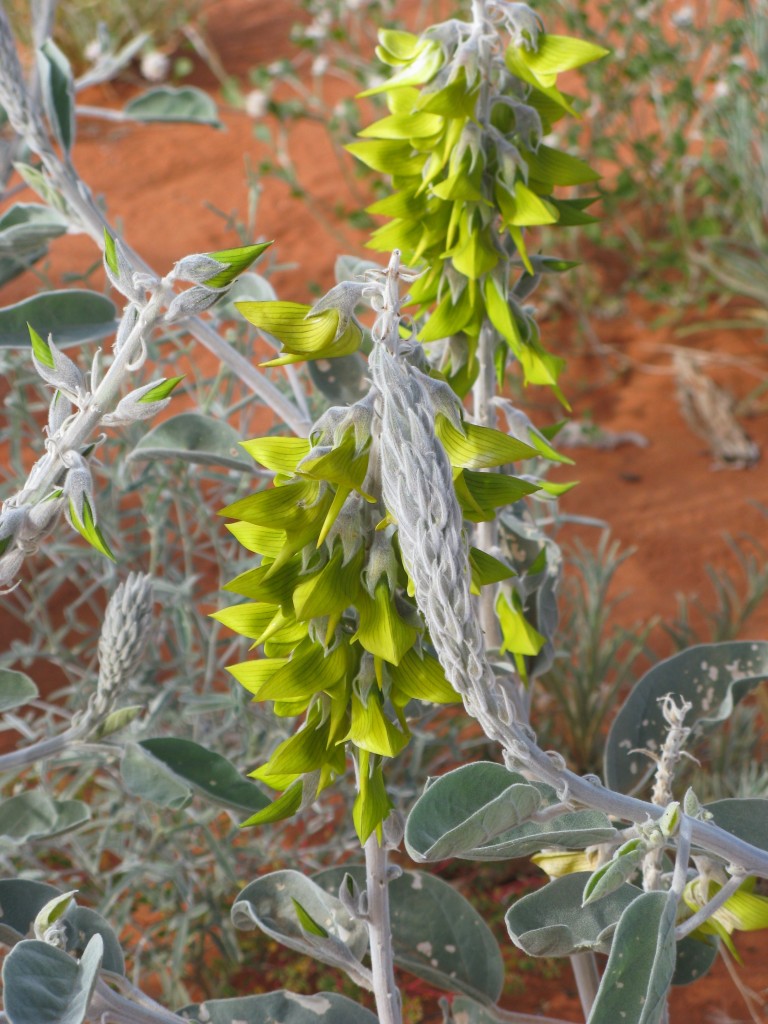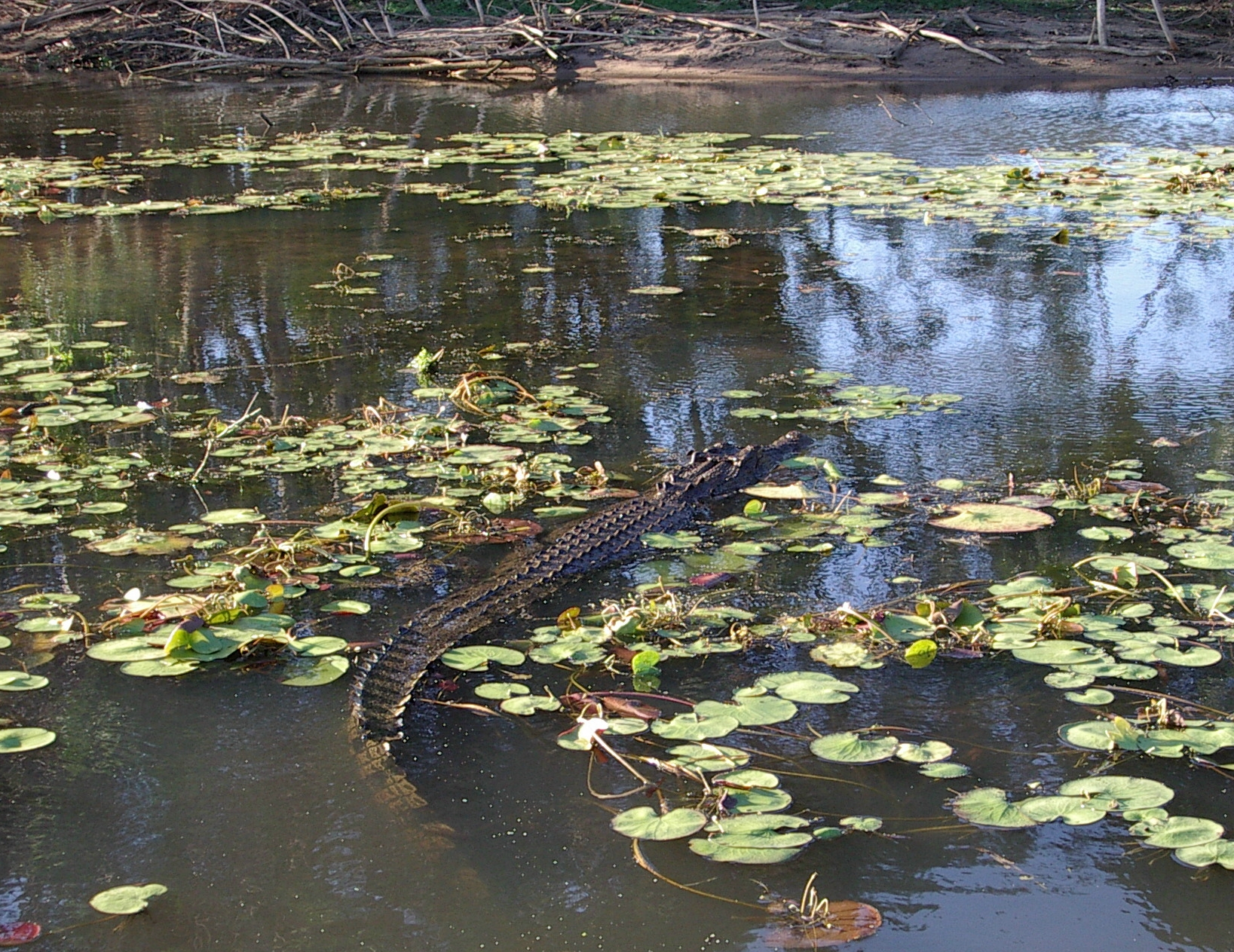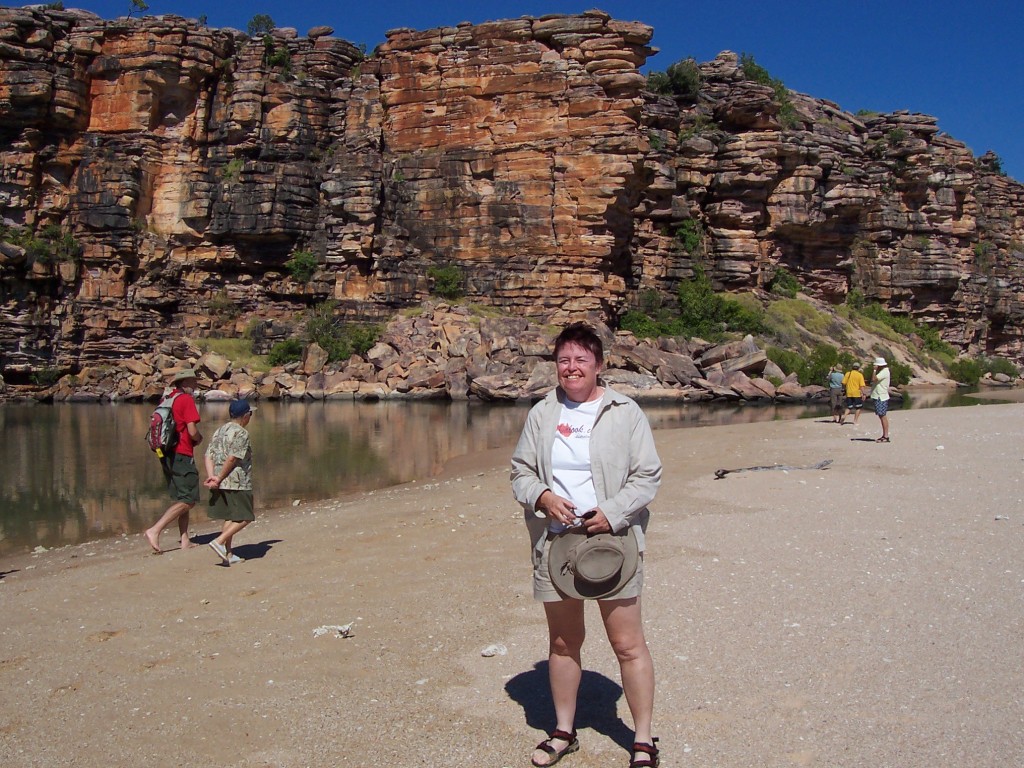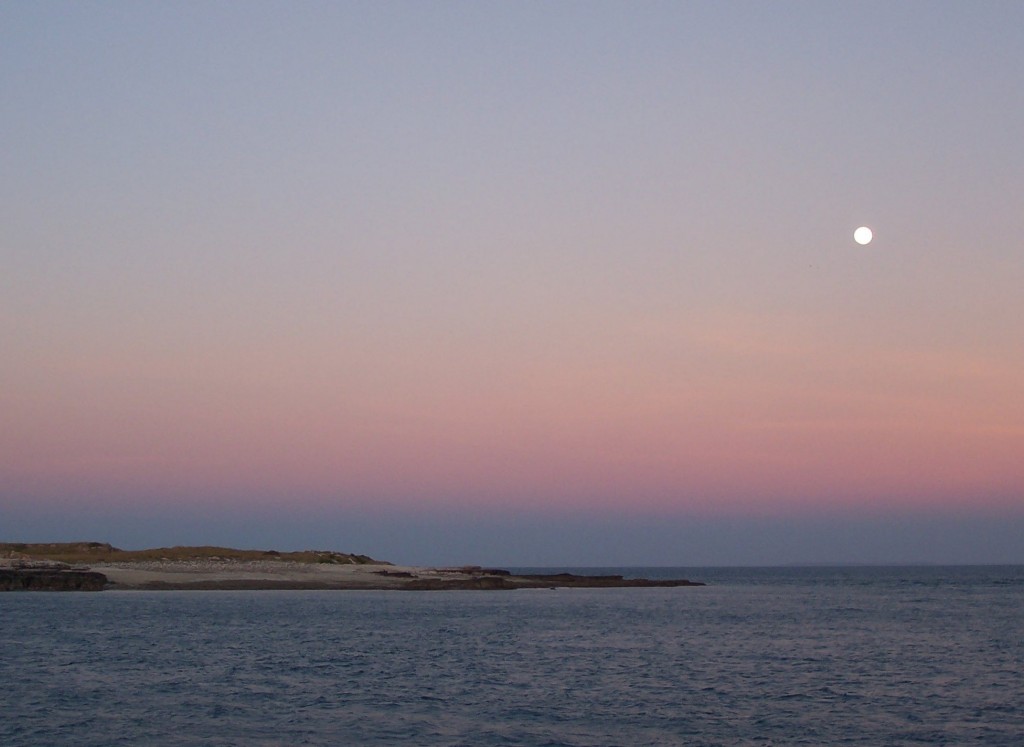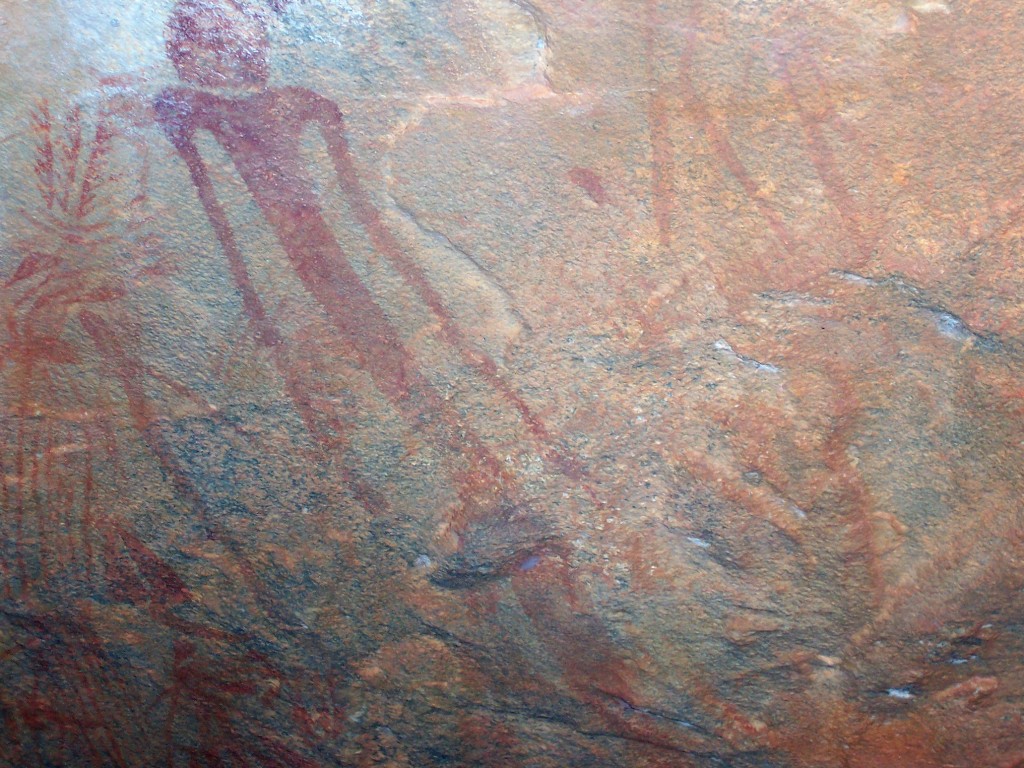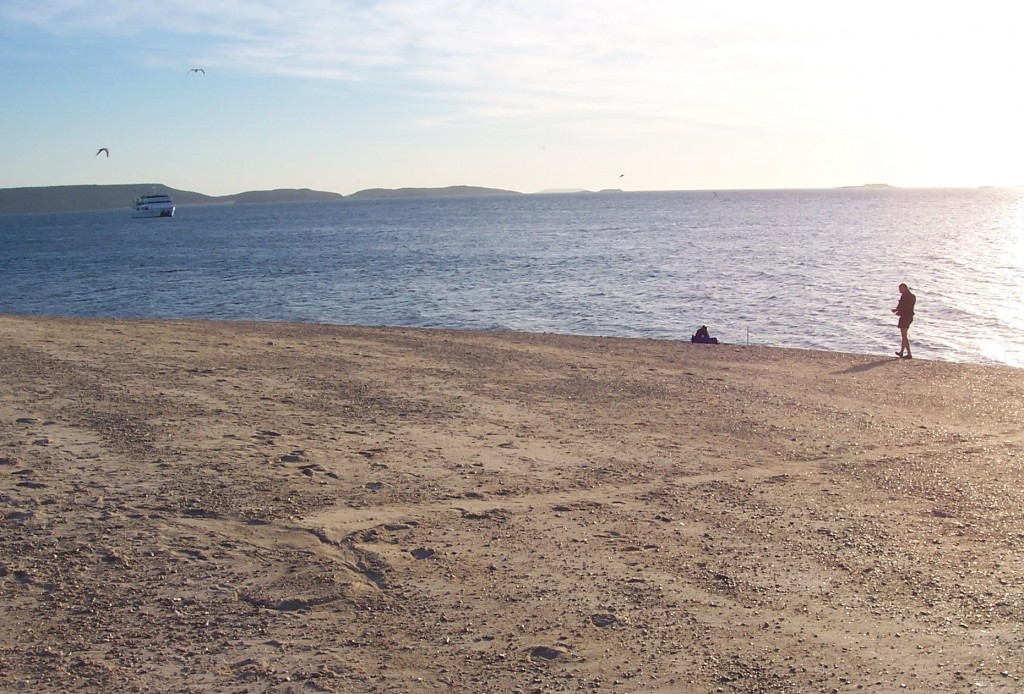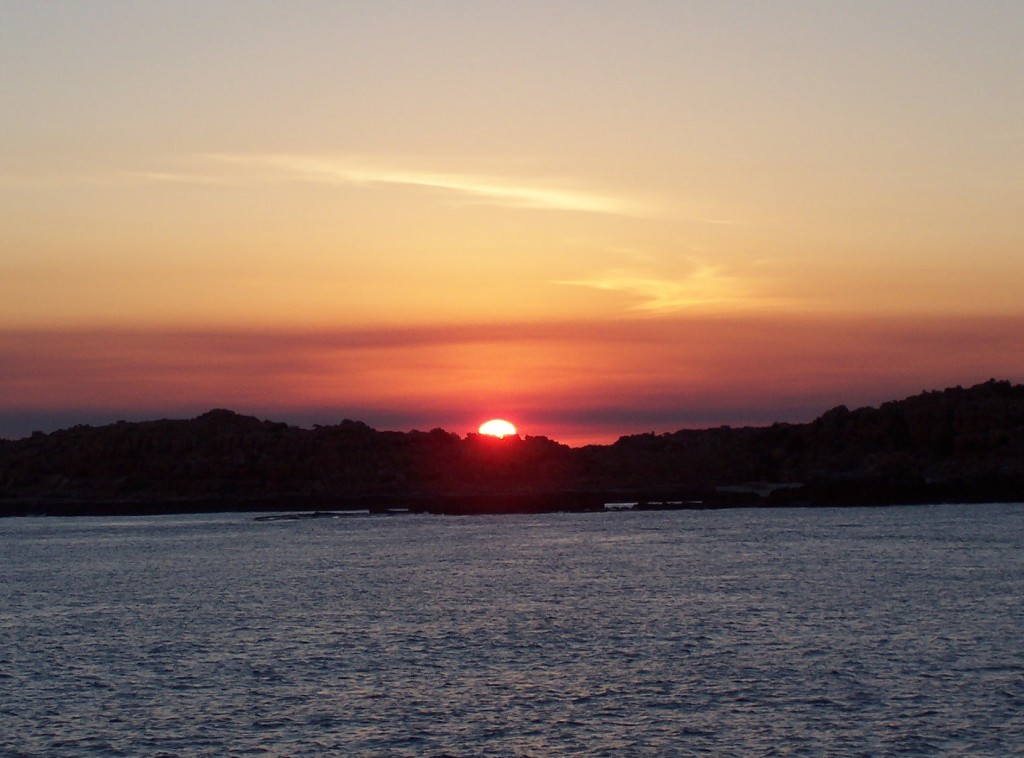14 November 2012, Trinity Beach, Far North Queensland, approx. 06:00 – 06:45. Scattered clouds blocked clear views of the eclipse as it proceeded (other than brief glimpses), but provided dramatic effects looking east toward the rising sun.
Total solar eclipse
14 November 2012. Trinity Beach, Far North Queensland, Australia. Approximately 06:35 – 06:55 local time. The clouds parted briefly just at totality, then a few more times. I didn’t have the right filters to do a proper job of photographing the eclipse, but I was more interested in experiencing it.
Red sand hills near Cameron Corner, South Australia
July 5, 2010. Somewhere west of Cameron Corner, South Australia, before joining the Strzlecki Track. After all the rain, the desert was blooming, and flowers as well as leaves appeared in many shades of green. On our previous trip through this country, little vegetation was visible; it then looked like a stereotypical parched, dry desert. Not this time!
Crocodile in search of a meal
Tuesday, 19 August 2003. We flew into Mt Borradaile in western Arnhem Land, the largest Aboriginal reserve in Australia. Access is normally by twin-engine plane from Darwin or Kakadu. Visitor numbers are strictly limited and by permit only, arranged prior to arrival with the Aboriginal custodians.
While at Mt Borradaile, we visited sites with stunning rock paintings (the subject of a forthcoming post). To get there, we were taken on a flat-bottom boat through extensive wetlands teeming with birdlife, saltwater crocodiles, and other creatures.
Here a 3-metre crocodile moves leisurely away from the boat, seeking peace and, probably, a meal. Given the huge flocks of birds in the swamp (second photo), the croc doesn’t need to work very hard to keep well fed.
A write-up on this part of our 2003 trip is here.
Aboriginal rock paintings, Bigge Island
10 July 2006. On Bigge Island, we visited two areas with Aboriginal rock paintings. At this spot, one required crawling and shuffling along on our backs. Here we saw some of the so-called Bradshaw paintings. Both locations had some of the best preserved paintings that I have seen (many spots on the mainland are more exposed and the paintings have deteriorated more).
A saltwater crocodile slept here
10 July 2006. Sterna Island is the breeding ground for a zillion terns of several species: Roseate, Crested and Lesser Crested. At least one crocodile lives here, as evidenced by a mark where it rested on shore and then slid into the sea. All the birds must provide an everlasting banquet for the croc!




